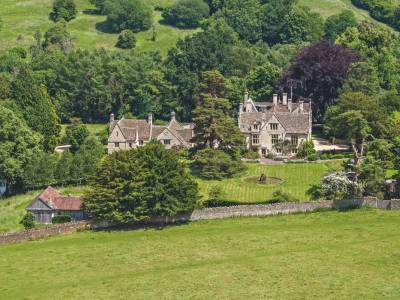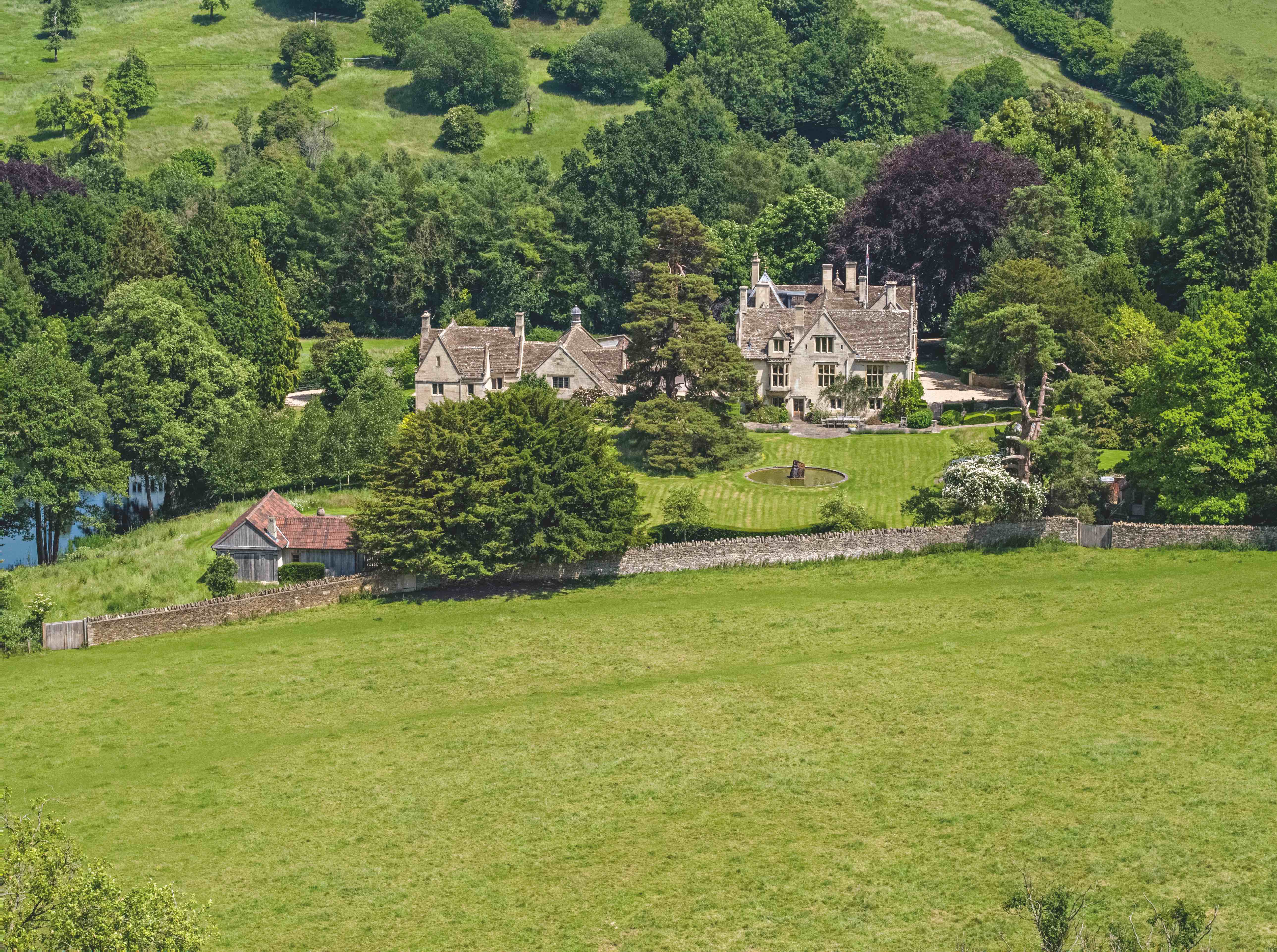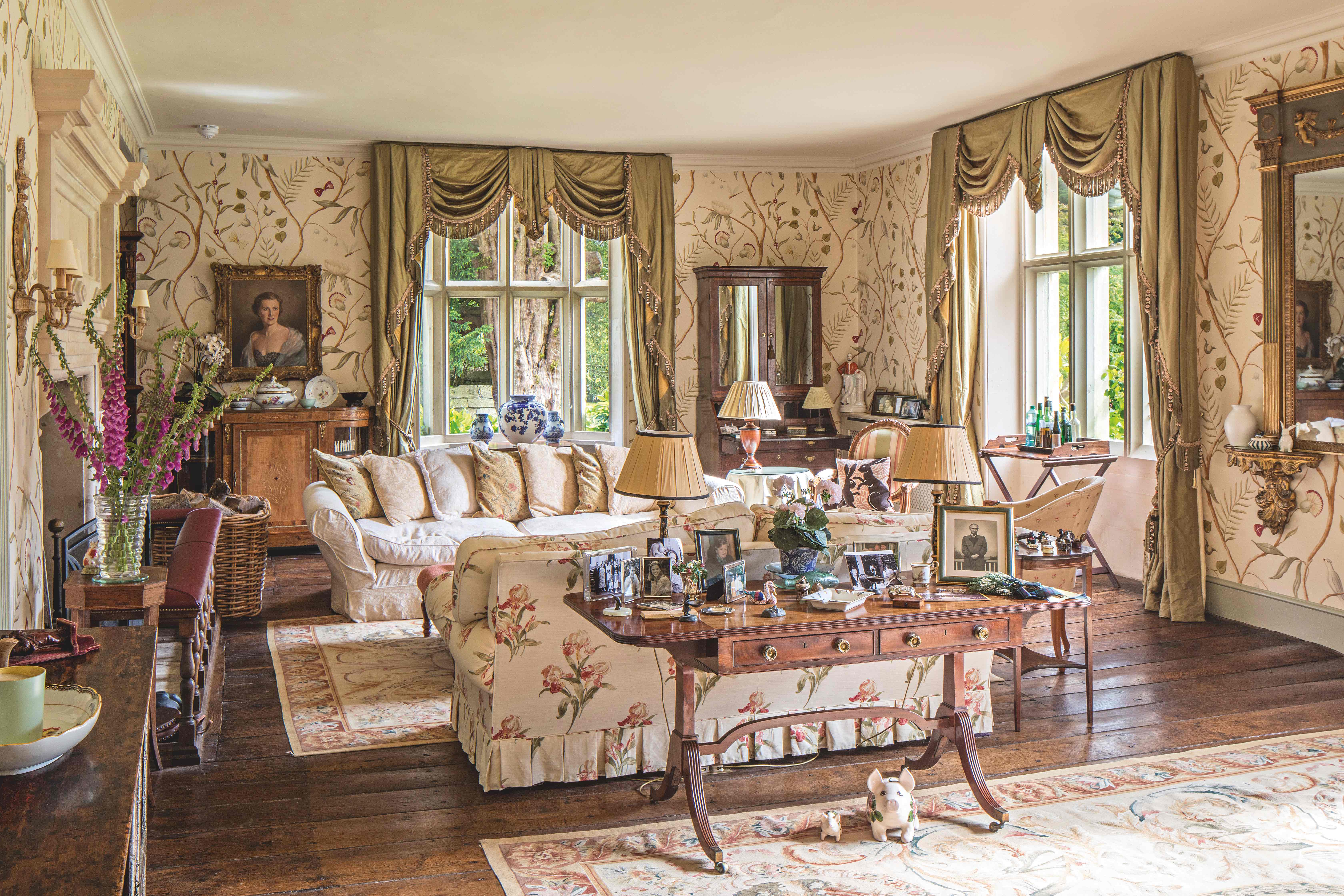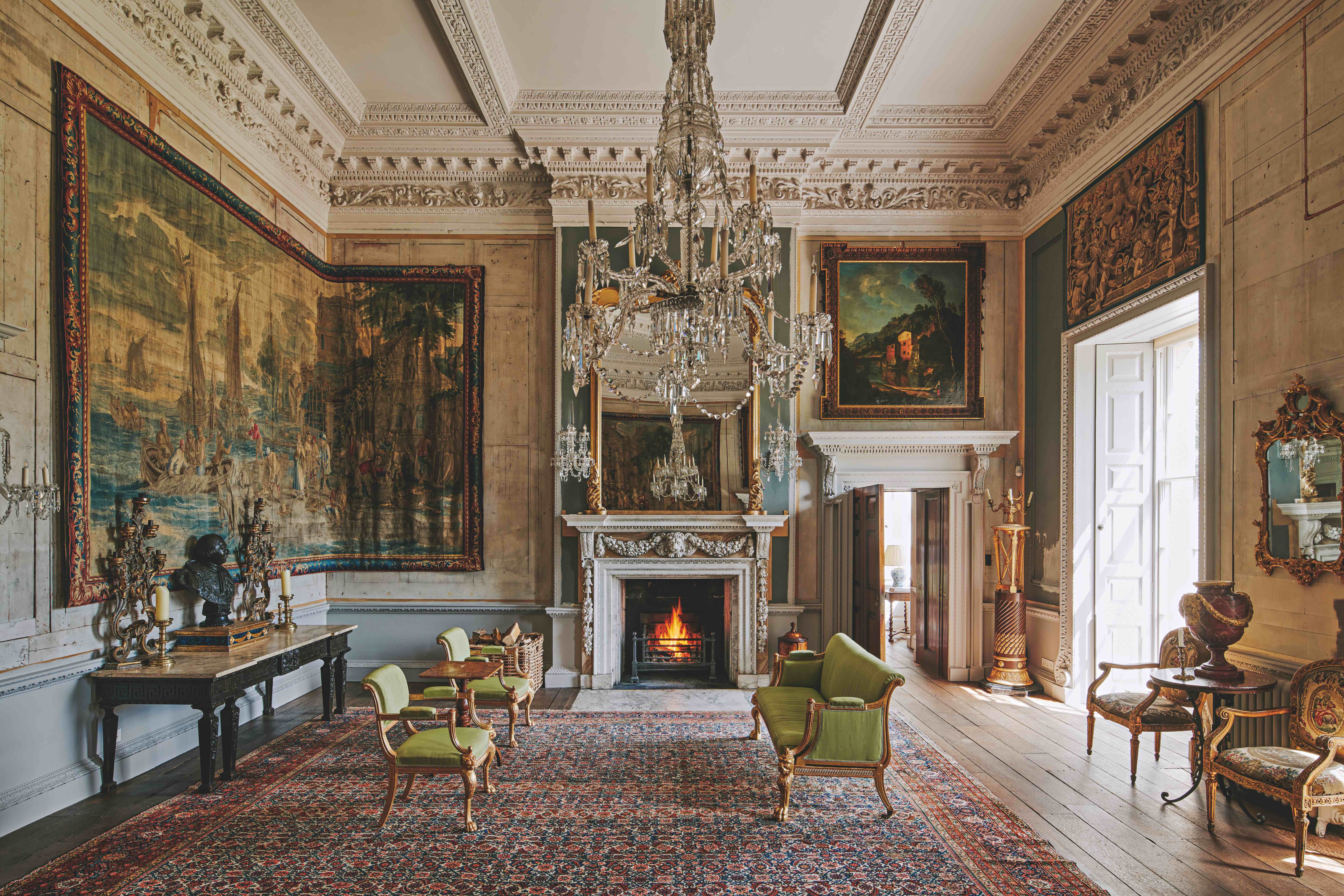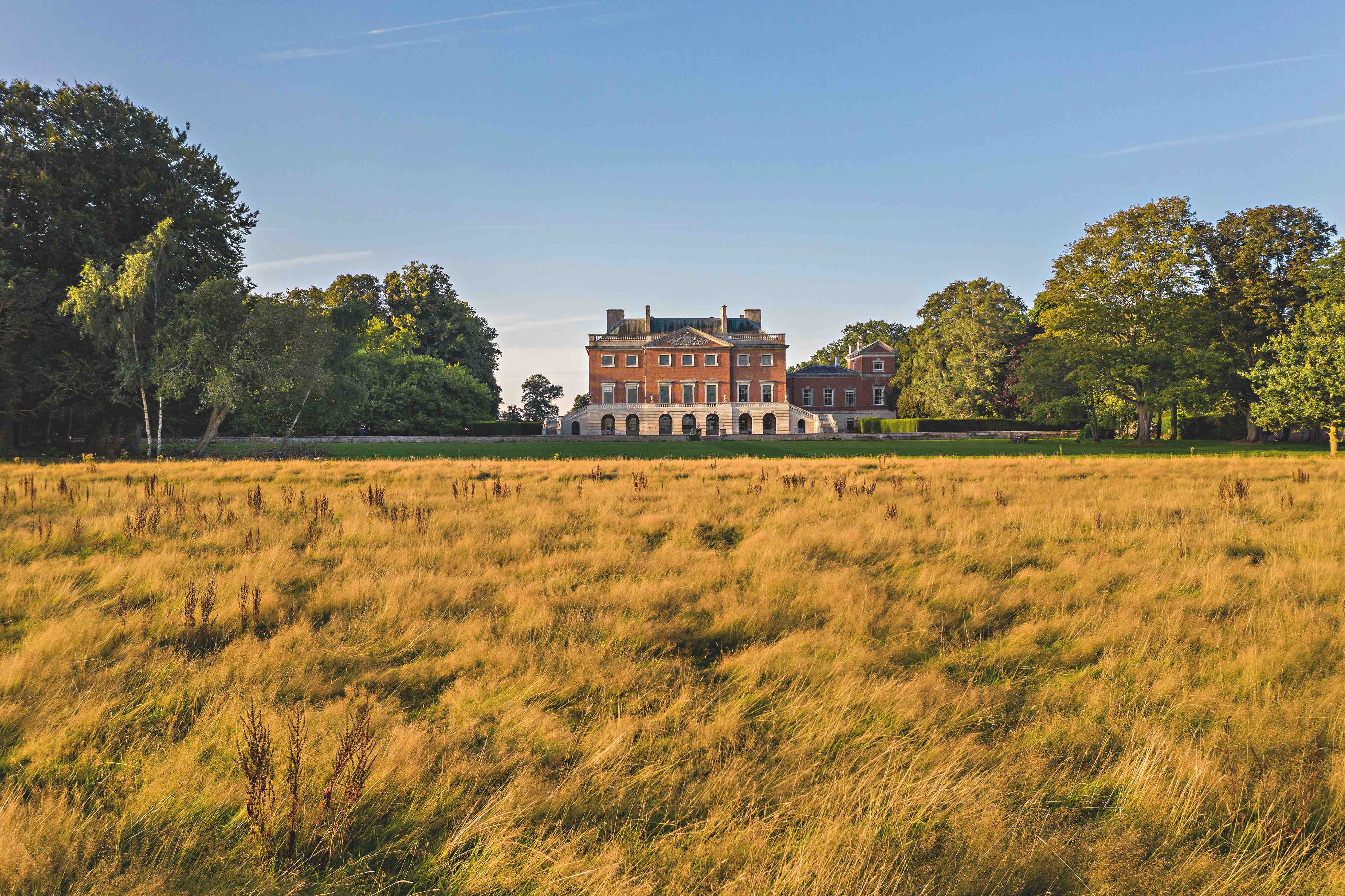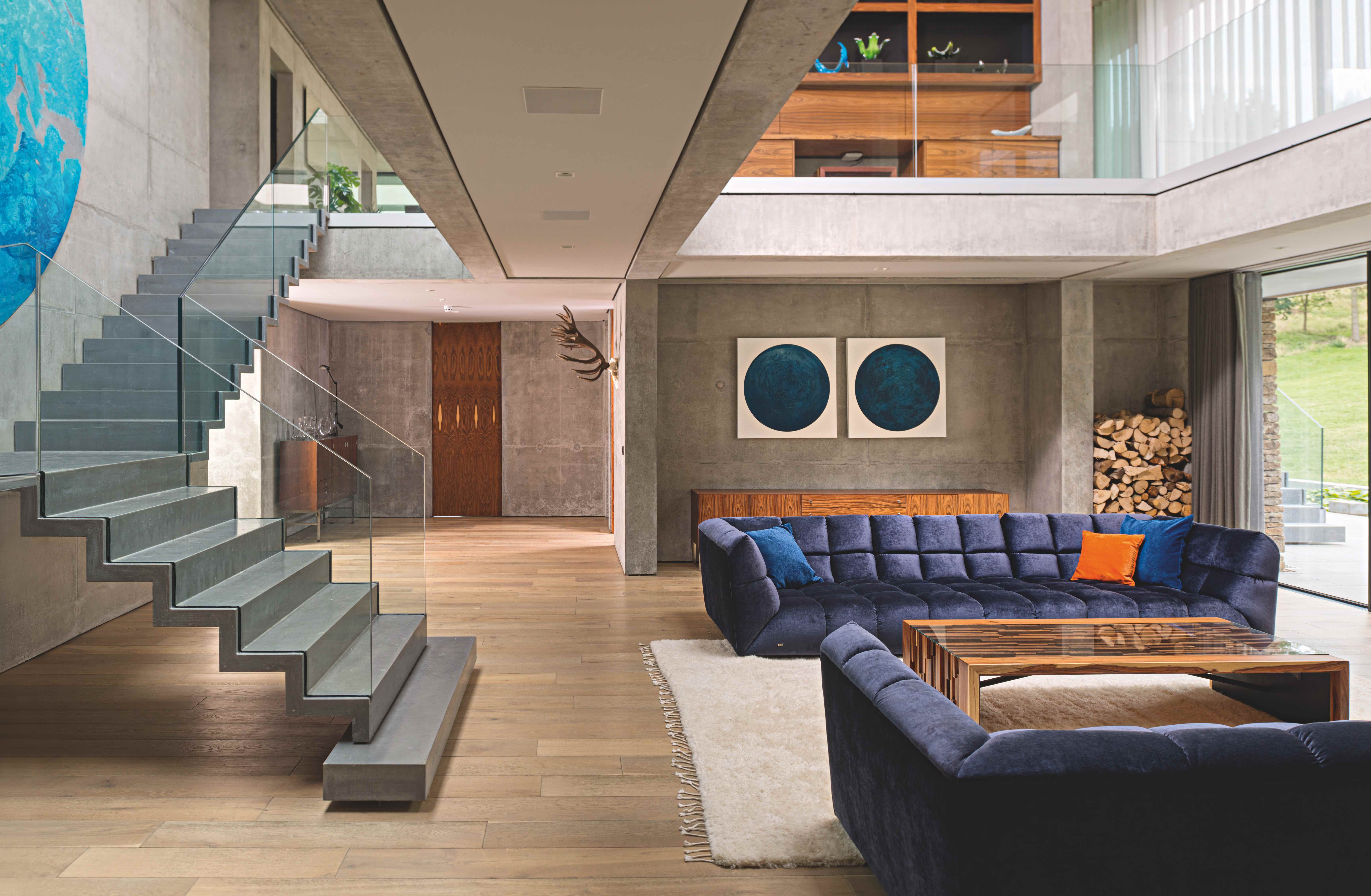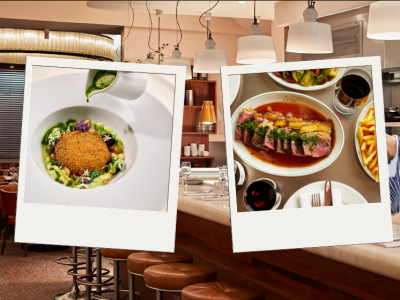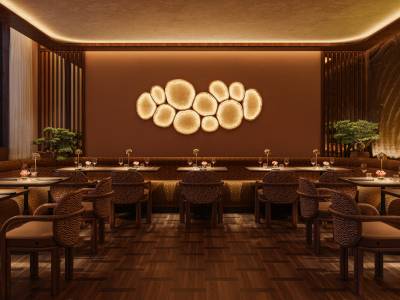Eco-Friendly Country Houses with Sustainable Architecture
29th October 2023
The new country life idyll is all about green tech as well as green surroundings. Buyers are seeking sustainable, eco-friendly, off-grid options alongside alluring architecture.
"Excess is out. Good energy is in!” announces Lindsay Cuthill, founder of Blue Book, an estate agency that deals exclusively with the kind of dreamy English country houses that makes Hollywood go weak at the knees.
The Old Priory, The Cotswolds
Take The Old Priory in the Cotswolds, where a Union Jack billows proudly atop a Grade I-listed manor house (on sale for £7.85 million), set among 85 acres of private wilderness that includes a one-acre lake and a swimming pool inspired by the site’s Roman origins.
By good energy, though, Cuthill isn’t just talking about how good it makes you feel to live in a house like this — though that’s undoubtedly the case. It’s about sustainable living, from the energy-efficient running of your house to your leisure choices.
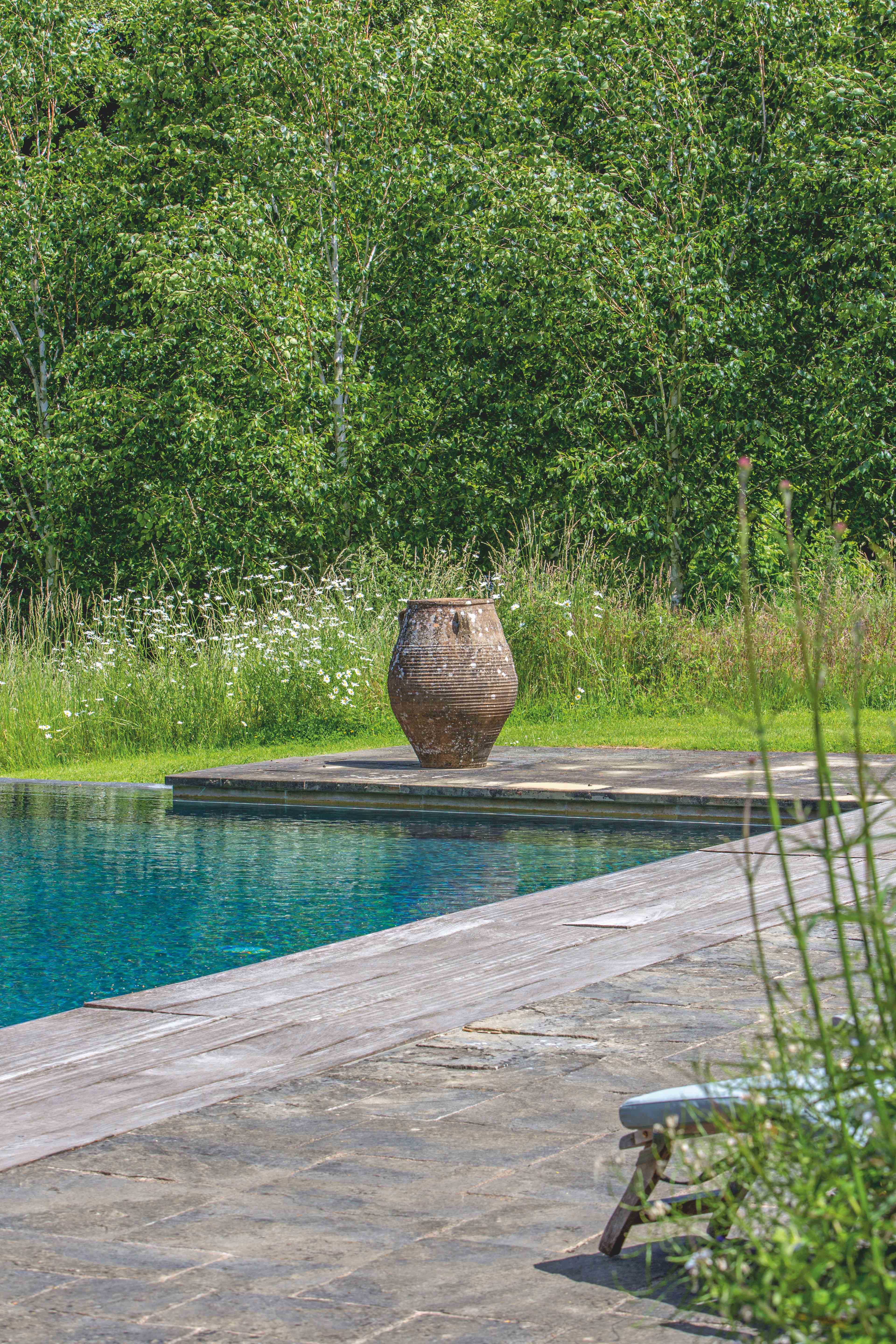
Out go hunting, shooting and fishing. In, now, is conserving and appreciating nature, swimming among reeds and toads in your own lake and cycling through your own woodland and wild-flower meadows. “Now more than ever, buyers want to go back to nature in their country homes. Dedicated areas for meditation, yoga and calm are being installed, or older structures like boat or pool houses are being adapted to suit the modern-day owner,” says Cuthill. If you can’t have a wild swimming pond, he adds, “then you at least want your traditional pool to be solar-heated.”
It’s a lifestyle shift noted by many agents dealing with the prime country market. “The backdrop has changed a lot. The labour-intensive formal gardens and box hedges that prevailed in the past have given way to estates that are a bit woolly round the edges. Now it’s all about rewilding, biodiversity and insect-rich pollination,” comments Jess Simpson, founder of Jess Simpson Property Search, whose buyers are still initially drawn to Cotswolds manor houses, or hanker after a slice of red-hot Bruton in Somerset, whose residents include Stella McCartney and Sam Taylor-Johnson. “What makes these places appealing in the first place can often be lost as they’re becoming incredibly popular, so I’m trying to steer buyers to the nearby Slad Valley, near Stroud, or to Wiltshire or the Chilterns,” says Simpson.
Firepits and outdoor kitchens — at their most romantic, on lake-bound floating decks, as seen with Guy Ritchie’s CC Wild Kitchens collection — are very much part of the post-Covid country picture, observes Simpson. And when it comes to the house itself, classic architecture is still many buyers’ preference, although she adds that they also want “comfort cooling and ideally a ground-source heat pump. They also want their own water source. It’s not about economics. It comes down to reliability and control. They don’t want to rely on others.”
Wolterton Hall, Norfolk
Among those striking a balance between tradition and sustainability in their extraordinary country house are Peter Sheppard and Keith Day, a design duo who, over several years, have undertaken the multi award-winning restoration of Wolterton Hall, a Grade I-listed Palladian mansion that is considered one of Norfolk’s four great power houses (the Coke family’s Holkham Hall is another). It’s now on sale for £25 million through Strutt & Parker, as Sheppard and Day move on to a new restoration challenge.
The house, which sits in a 458-acre estate, retains all its historical authenticity and opulence, including the state dining room where the couple still host black-tie dinners of the sort that Lord Nelson attended there in centuries past. But there are concessions to modern living, says Sheppard, including his “very cool” basement cinema room with its Mies Van der Rohe footstools and the contemporary brasserie-style kitchen of the sort he designed for Smallbone, “with no Aga in sight.” Sustainability is very much part of the picture too, with plans for air source heat pumps in the huge cellar and solar panels covering 7,000 sq ft of the roof.
Sheppard, too, prefers the woolly-edged look to his extensive land. “We only have a very small garden. Much of the park is natural and we have sheep to keep the grass down. We’ve restored the cottages in the grounds for paying guests and it’s all about the nature experience,” he says. “Thirty years of neglect before we bought the estate has helped, as it has encouraged wildlife.”
Despite the cost-of-living crisis, ambitions to run country houses sustainably and energy-efficiently are more to do with feeling you’re doing the right thing than necessarily counting the pennies. “There’s a real feeling that if you’re taking on something like this, you must be aware of its footprint. Vendors have often done a lot of work in looking into air or ground source heat pumps and solar power, so they can pretty much hand prospective buyers a handbook to how it all works,” says Tim Phillips, Savills’ East of England director.
As virtuously green as buyers’ intentions may be, though, big old country houses don’t always play ball. “Grade-listed properties offer very limited to no opportunities for sustainable upgrades. Some homes might benefit from new windows or different insulation material, but buyers will discover that the much-hyped heat pumps are generally not sufficient for most older properties,” points out Nigel Bishop, founder of Recoco Property Search, a buying agency specialising in the English coast and country.
Simpson has seen similar disillusionment with biomass boilers. “We’ve just bought a Cotswolds house for a client who has immediately ripped out the six-figure wood chip installation as it kept breaking down,” she reports. “Buying wood chip, which is often from Europe, isn’t particularly eco-friendly either. This particular client has reverted to an oil-fired heating system because it’s more efficient.”
Valley Farm, North Yorkshire
For those prepared to sacrifice historic charm, the desire to live a luxurious but sustainable rural life leads naturally to new builds. Modern properties such as Valley Farm in North Yorkshire, an 18,000-sq-ft glass box set designed by award-winning architect Mark Bramhall, on sale for £8 million through Savills, offer a blueprint for truly green country living.
The property’s 65 acres have been ring-fenced, explains Phillips, “so that deer roam freely. The owner goes out on his buggy, sounds a bell and the deer come running. That’s the kind of country lifestyle people love.” Built from stone reclaimed from the building that previously stood on the site, and insulated by a green roof that you can “wander on and admire the valley”, according to Savills, the 11-bedroom house is fed with spring water from its own seven lakes, heated by a biomass boiler that uses timber from its own woodland, and there is scope for the estate to be 100% off-grid. “There’s definitely an audience for this kind of ultra-contemporary country property,” says Phillips. “These are people who want to be less attached to the grid. They love the idea of green energy to prolong the longevity of the house even further.”
Great Deptford House, North Devon
Country classicists look away, but Great Deptford House, a modern, carbon-neutral home in North Devon — on sale through Pilkington Estates for £2.75 million — is another beacon of ultra-green living designed for nature-lovers. Owners Steven and Tamsin Bryan describe the joys of watching kingfishers, hares and the occasional deer from their living room, and observing the night skies from their fully automated observatory.
They have even built a £30,000 “bat palace” next to their 540-sq-m house, to accommodate the protected resident bat population, “who play a vital role in the eco-system. We just hope they appreciate it,” says Steven Bryan, a construction company owner “used to building energy-efficiently.” Tamsin Bryan is a qualified energy assessor who says she has been “banging on about climate change for four decades.” The house thus naturally showcases all the latest green tech, including a ground source heat pump linked to solar panels to meet all the property’s heating and hot water needs “without the need to burn fossil fuels,” say the Bryans. “Our house is four times bigger than the average-sized property, but our running costs are well below.”
“There has definitely been a massive change in the country house-owning mindset,” says Phillips, who has found a fruitful side hustle showcasing grand country homes on his YouTube channel, @Tim_prime_property. His videos, he explains, reach a fresh audience.
He thinks the way to describe this new country life idyll is “wholesome. Buyers see their kids running around the land, keeping sheep and bees, making their own food. That’s the dream now, isn’t it?”
